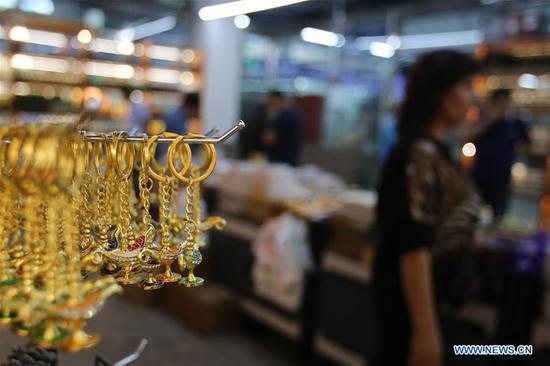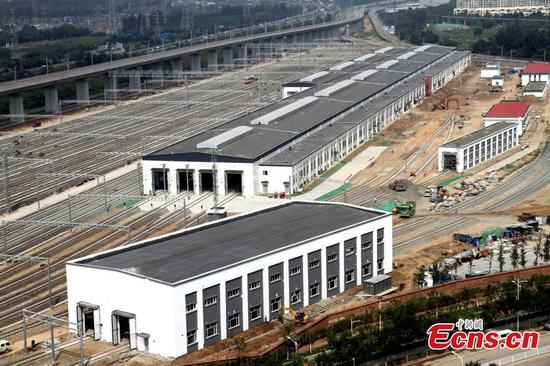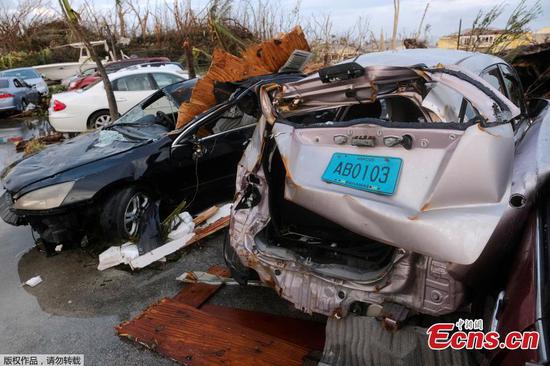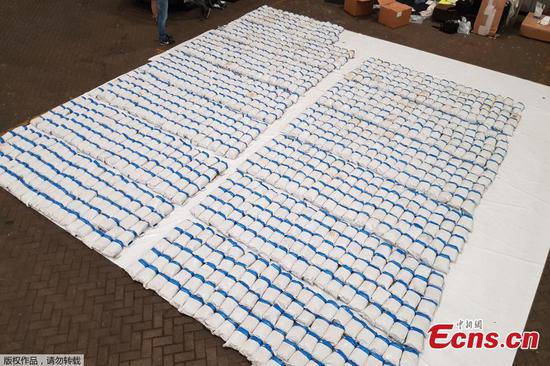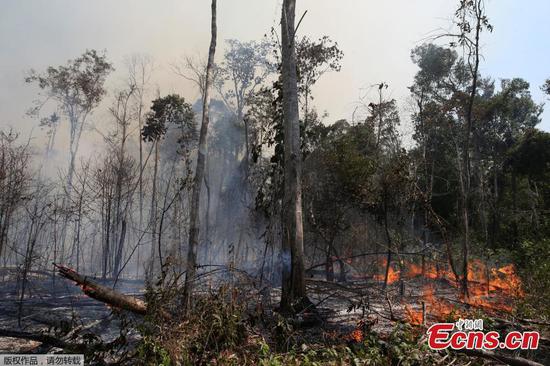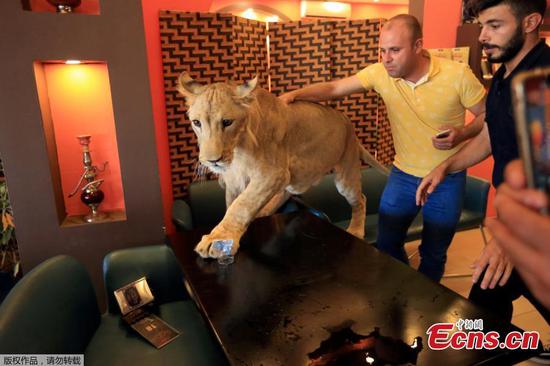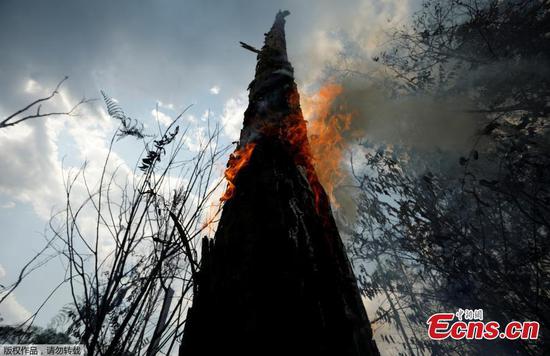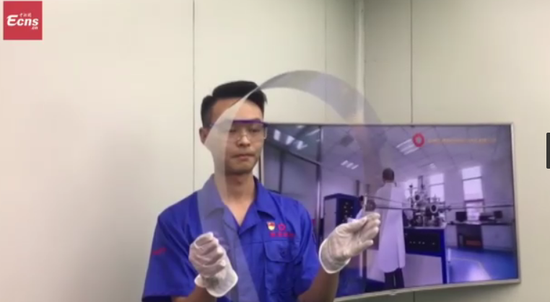
Country working with German experts to improve production, management
Increasingly strict environmental standards in recent years have prompted Ding Dagan, deputy general manager of a pig breeding company in Henan province, to improve waste treatment at his farms, including upgrading the recycling facilities that turn pig waste into farmland fertilizers and methane for fuel.
His latest proposal, made during a visit to the company by a group of German experts late last month, was to fit all its pig houses with waste gas treatment facilities.
"There are no mandatory regulations on the treatment of waste gases emitted from pigs in China at present, but I think in five or 10 years such regulations are very likely to come," said Ding, from Henan Yifa Animal Husbandry in Hebi. "We must make preparations in advance."
In addition to greenhouse gases such as carbon dioxide and methane, odorous gases such as hydrogen sulfide produced in pig farms cause serious environmental pollution and could be a source of complaints from nearby residents, Ding said.
"As far as I know, no pig farms in China have been equipped with waste gas treatment systems," he said.
"We do not have experience building such systems, and I hope we can get assistance from the German experts."
Henrik Delfs, an agricultural adviser for a Sino-German animal breeding and husbandry cooperation program, said waste gas treatment systems-capable of removing up to 80 percent of all waste gases produced-must be installed in all new pig farms in Germany.
The government has stepped up efforts to cut greenhouse gas emissions in China in recent years.
Home to one of the world's largest livestock industries-as the world's top producer of pork and mutton and the third-largest producer of beef-the country has also joined the effort to reduce the contribution of livestock to global warming.
An ongoing cooperation program between China and Germany has been searching for innovative solutions to gas emissions from livestock, ranging from developing new feeds and new waste treatment technologies to promoting superior breeds that emit less gas.
The program, the result of a deal between the Ministry of Agriculture and Rural Affairs and Germany's Federal Ministry of Food and Agriculture, has been carried out since 2011, covering a wide range of areas, including improving production, pig farm management and environmental protection.
In April, the two sides decided to extend the cooperation to reduce greenhouse gas emissions in the livestock industry.
Through the new project, which will run until the end of the year, scientists from China and Germany will develop innovative methods and technologies on greenhouse gas reduction at three pilot farms in China, said Yang Hongjie, division chief for animal industry development at the Chinese ministry's National Animal Husbandry Services.
After the project is completed, the results will be evaluated and the lessons learned may be spread to other livestock farms in China, he said.
At Henan Yifa Animal Husbandry, a pilot of the cooperation project, recycling systems were built to turn pig waste into methane, which is then turned into electricity.
Previously, the company's 60,000 pigs could generate about 1.2 million kilowatt-hours of electricity a year, meeting half its demand for power, Ding said.
The number of pigs has plummeted this year due to African swine fever, but Ding said production may be restored next year.
"We will also work with the German experts to build waste gas treatment facilities on our farm," he said.
"It may become a model, so other pig farms in the area will also build such facilities to reduce their environmental impact."
Zhu Zhiping, a professor at the Chinese Academy of Agricultural Sciences' Institute of Environment and Sustainable Development in Agriculture, estimated that livestock raising, especially raising ruminants such as cattle, sheep and goats, produce about 400 million metric tons of greenhouse gases every year, accounting for about 5 percent of all greenhouse gas emissions in China.
Globally, the percentage is even higher, he said.
With increasing demand from the market for meat, implementing emission reduction measures is necessary to help cut greenhouse gas emissions, he said.
"The livestock industry in China has been carrying out emission reduction measures over the past few years, including improved feeding methods that increase feed conversion efficiency and reduce methane emissions," he said.
"Promoting superior breeds can also reduce emissions while improving production."
Lin Chunjian, CEO of Tianjin Aoqun Animal Husbandry, a sheep breeding company in Tianjin, has been trying to breed animals with higher growth rates and better disease resistance. Soon, once a new facility is completed, breeding will also focus on reducing the animals' emissions of greenhouse gases, such as methane and carbon dioxide.
The facility, being built with subsidies from the Ministry of Agriculture and Rural Affairs, will include labs to test the performance of different breeds of sheep, including their productivity, growth rate, feed consumption and gas emissions, to help select the best traits.
In addition to reducing their environmental impact, promoting sheep with less greenhouse gas emissions may also bring economic benefits as such breeds usually require less food to grow.
Zhu, from CASS, said although sheep emit less greenhouse gases than other animals, such as cattle, there are an estimated 300 million sheep in China, among the most in the world, and that means promoting low-emission sheep could make a significant contribution to reducing the agricultural sector's greenhouse gas emissions.
Hindri Kuipers, a senior husbandry adviser from Germany involved in the cooperation program, said he had been impressed by the size of some livestock farms in China, which could house tens of thousands of animals.
Considering the size of the livestock industry in China, carrying out emission reduction measures in the industry would contribute to global emission reduction efforts, he said.
"In most parts of the world, there is a lack of regulations on greenhouse gas emissions in the livestock industry," Kuipers said.
"The knowledge and experiences to be gained in Chinese farms through the cooperation can also be used in Germany and other countries to help them reduce greenhouse gas emissions in livestock raising."









